
SEO is the holy grail of inbound marketing. Placing your website where people are actively searching for what you offer is one of the most effective online marketing strategies with the highest conversion rate.
You may not be familiar with the term, but your organic click-through rate is an important metric when it comes to gauging the performance of your pages in the search engine result page (SERP).
Table of Contents
ToggleWhat is the organic click-through rate?
The organic click-through rate refers to how many clicks your website receives compared to the total amount of available clicks. If a keyword generates 1000 clicks on the first page of search results and your website gets 400 of those clicks, your organic click-through rate is 40%.
The trend has been an increase in the number of Google features that occupy the first page of search results. This has forced website owners to take a more strategic approach to generate traffic from the Google search index.
The organic click-through rate your website receives becomes an important factor because it’s a metric that Google measures and rewards. Each position on the first page of search results has an expected click-through rate. If your website exceeds the expected click-through rate, Google will position your page higher in the SERP.
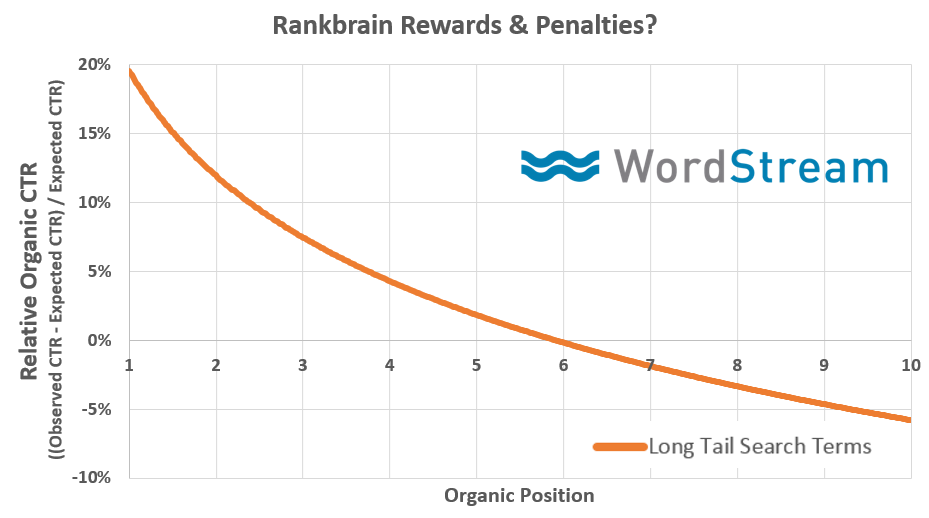
The same holds true if you reverse the situation. If your page receives less than the expected number of clicks, it will lose position on the SERP.
The click-through rate your page receives plays an important role in your ranking and ultimately in the volume of traffic, you drive to your page.
So how can you increase the organic click-through rate of your site? Here are a few strategies to implement that will work to get your page more clicks from the SERP.
Improve your page ranking
If you improve the position of your website on the first page of results, you will naturally increase the organic click-through rate. The first five search results typically receive the lion’s share of the traffic on most keywords. Improving your position closer to the top of the page will give your website more search visibility and as a result, more clicks to your page.
Improving your ranking isn’t a simple task but with a planned effort you can work towards this goal using the following tactics:
Enhance optimization
Make sure you’ve covered the essential on-page optimization factors that indicate the most important keywords on your page. Use your keyword in the title, meta, URL and within the first 100 words of your page.
Tag your images with your keywords within the image alt description and as a bonus, use the keyword in the image filenames.
You can use the tool Text Optimizer to make improvements to the text on your page. This tool will suggest a number of LSI keywords to add to your page and could be the boost you need to enhance your optimization.
Add backlinks
A high-quality backlink will increase the ranking ability of your page. Avoid linking to questionable websites and make your links count by researching and vetting the websites to make sure they are a good source of authority and credibility for your content.
Answer search intent more thoroughly
At the end of the day the most important part of achieving a top ranking is about how well your page answers the intent of the search. Make sure a user can land on your page and have every question answered that’s related to the query.
Analyze the top-ranking pages and make sure you haven’t left any details out in your content. Improve the quality of your page to be a better solution to user intent.
Tempt users with a catchy headline
The headline of your page is the most important part of marketing your website in the SERP. It’s one of the first things a user sees when scanning the results page and will heavily influence whether they will click on your site. There are dozens of headline strategies you can implement that are proven to attract more clicks.
Did you know traffic can be swayed as much as 500% based on your headline? Your headline is the single most important selling feature of the content you’re producing.
There are numerous studies that have been published to improve the click-through rate of your site by making subtle changes to your headline. Learn how to write a great headline using any one of these strategies.
Use numbers in your headline
One of the top-performing types of headlines is those that include numbers. Listicles, by far, receive the highest CTR and get the most shares on social media.

Incorporate a number within your title to improve the number of clicks your page receives.
Use brackets within your headline
Another strategy to increase organic ctr is to use brackets in your headline. The use of brackets attracts users because they understand they’re getting a quick summary of the article. You can use brackets to feature specific aspects of your content and make it more enticing for the click.
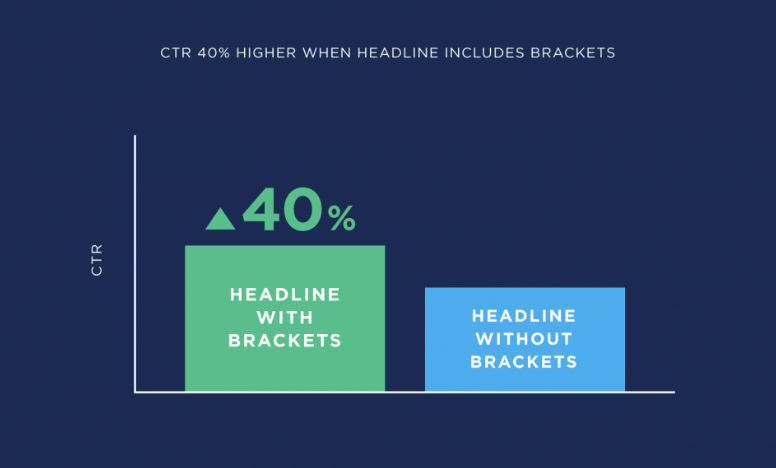
Create user/search engine-friendly URLs
Use short, descriptive URLs that contain your keyword so that search engines and users have an accurate idea of the content your page contains. The URL is one of three things a user will see on the result page so it’s important to take advantage of this aspect of marketing your content.

Compare the above URL with non-descriptive URL (below) and it’s much clearer why a user would pick the shorter URL that includes the target keyword.

User-friendly URLs are easy to read, short and are typically a summary of the content and a shorter version of the title. Avoid computer-generated URLs that have no meaning to users or search engines. Take a look at the ranking results of pages that have short URLs:
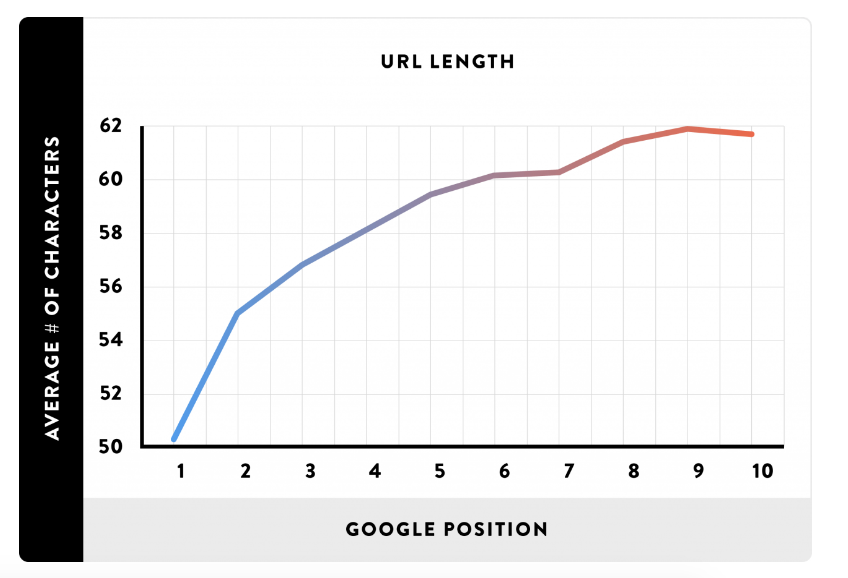
If you’re using WordPress (which accounts for 75% of the total websites created) then it’s an easy fix to make sure you’re able to use your keyword in the URL. Simply go to Settings, Permalinks, and select Post name as the preferred extension of your URLs.
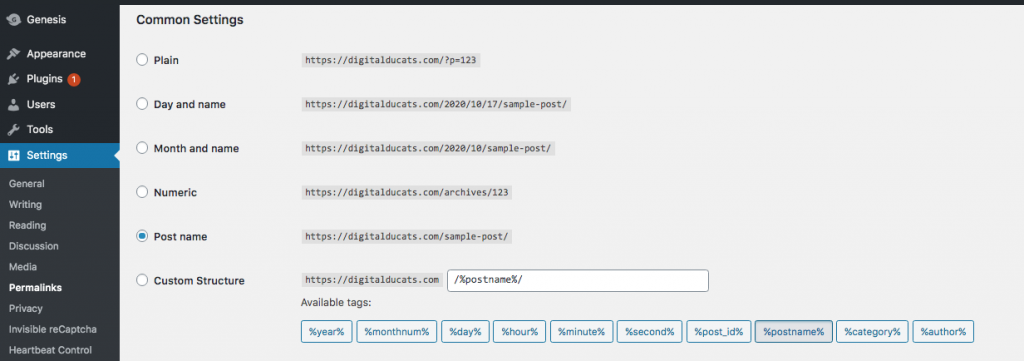
Draft enticing meta descriptions
The meta description is your opportunity to convince a user that your page is the best option to satisfy search intent. Incorporate the keyword in the front end of your meta description to show users that they’ve come across a page directly related to their search.
You have 160 characters to create an elevator pitch to get the user excited about the content that you’ve published. Provide an accurate summary of how your page addresses the true intent of the search.
Install Yoast for the easiest way to manage your metadata. Yoast provides you with a section to enter your meta description with a visual gauge for making sure the length of your description is adequate.

Failure to enter a meta description will force Google and other search engines to come up with one for your page. The snippet that appears may not be as convincing as the one you can create yourself. It’s an SEO best practice to include a meta description for every page you intend to display in the search results.
Implement structured data markup
Structured data markup is useful for search engines because it summarizes the content on your page in a more easily accessible language. The implementation of structured data markup can result in rich results, which enhances the quality of your search result listing.
Rich results
Google has steadily increased the number of features that appear in a search result. Anything that isn’t just a blue link can be considered a rich result.
Rich snippets can make your listing more attractive to users and therefore attract more clicks. Rich results can come in a variety of flavours, however, there are specific types of Schema you can deploy that will encourage Google to feature your content as a rich result.
There are ratings and reviews,

FAQ Schema,
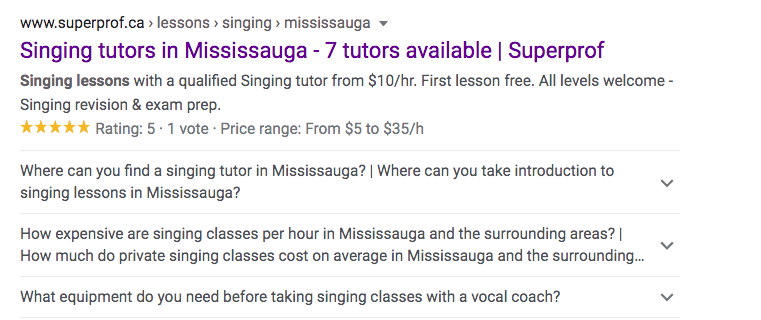
Q & A Schema,
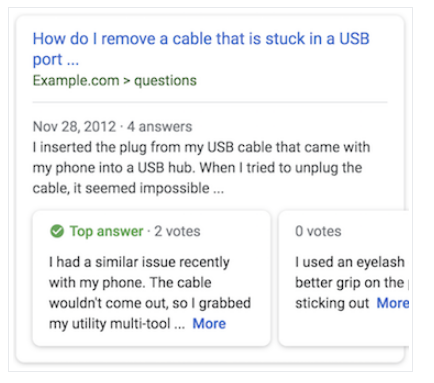
How-to Schema,
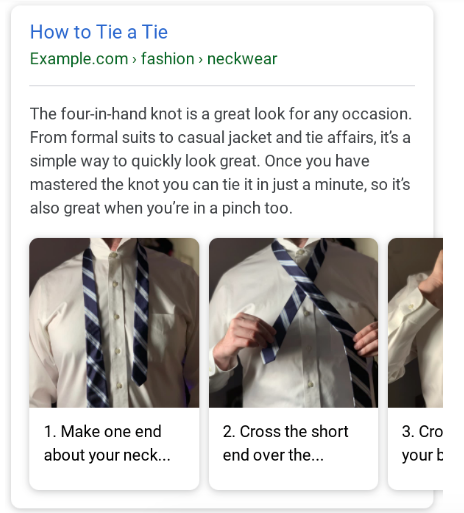
By implementing the correct structured data markup, you can deploy the types of Schema that will make your page eligible to be featured as a rich result to increase the organic CTR of your website.
Increase page speed
The speed at which your page loads plays a role in how many visitors actually land on your page. If you’re anything like the majority of users, you can relate to the fact that people tend to leave websites whose pages take a long time to load. In fact, studies show that an increase in load time from 1-3 seconds will increase the likelihood of visitors backing off your page by 32%.

Increase your page speed to reduce the bounce rate and get more visitors on your page. You can do this a number of ways but the first step is to identify the problem by visiting Google PageSpeed Insights.
Enter your URL and Google will provide you with a detailed report on how to improve the time it takes for your pages to load. The report will indicate the major areas that are slowing down your page.
Take preventative measures
Make page speed a conscious effort in your content creation to improve user experience. Use plugins that reduce the size of your images (Smush) as well as a CDN for faster server response times. W3 Cache is also a plugin that will allow you to leverage browser caching and inline HTML, CSS and JavaScript. By addressing these four issues you can maintain a page speed close to the recommended load time of 2 seconds.
Target additional keywords
Optimize for additional keywords to increase the organic click-through rate of your page. Although you may be targeting one major keyword, you can improve the traffic your page generates by identifying alternate keywords that your page is also ranking.
Rather than just driving traffic from one keyword, you can improve the optimization of a second and third keyword to increase your position and overall click-through rate.
Using a tool such as SEMRush makes it easy to see what alternative keywords your page is appearing for in a search.

Moving your page up from the second page to the first page can tremendously affect the clicks your page receives, but keep in mind that some of the greatest gains with less effort will come from moving your page from positions 6-10 into the top 5 search results.
Increasing organic CTR ultimately increases revenue
The traffic your website receives is directly related to the revenue it generates. The law of averages dictates that the more visitors that are frequenting your website means that there will be more sales and new clients.
If you’ve targeted the right keywords in your strategy you now have multiple ways to increase organic click-through rate which results in increased traffic, leads, and new clients.



